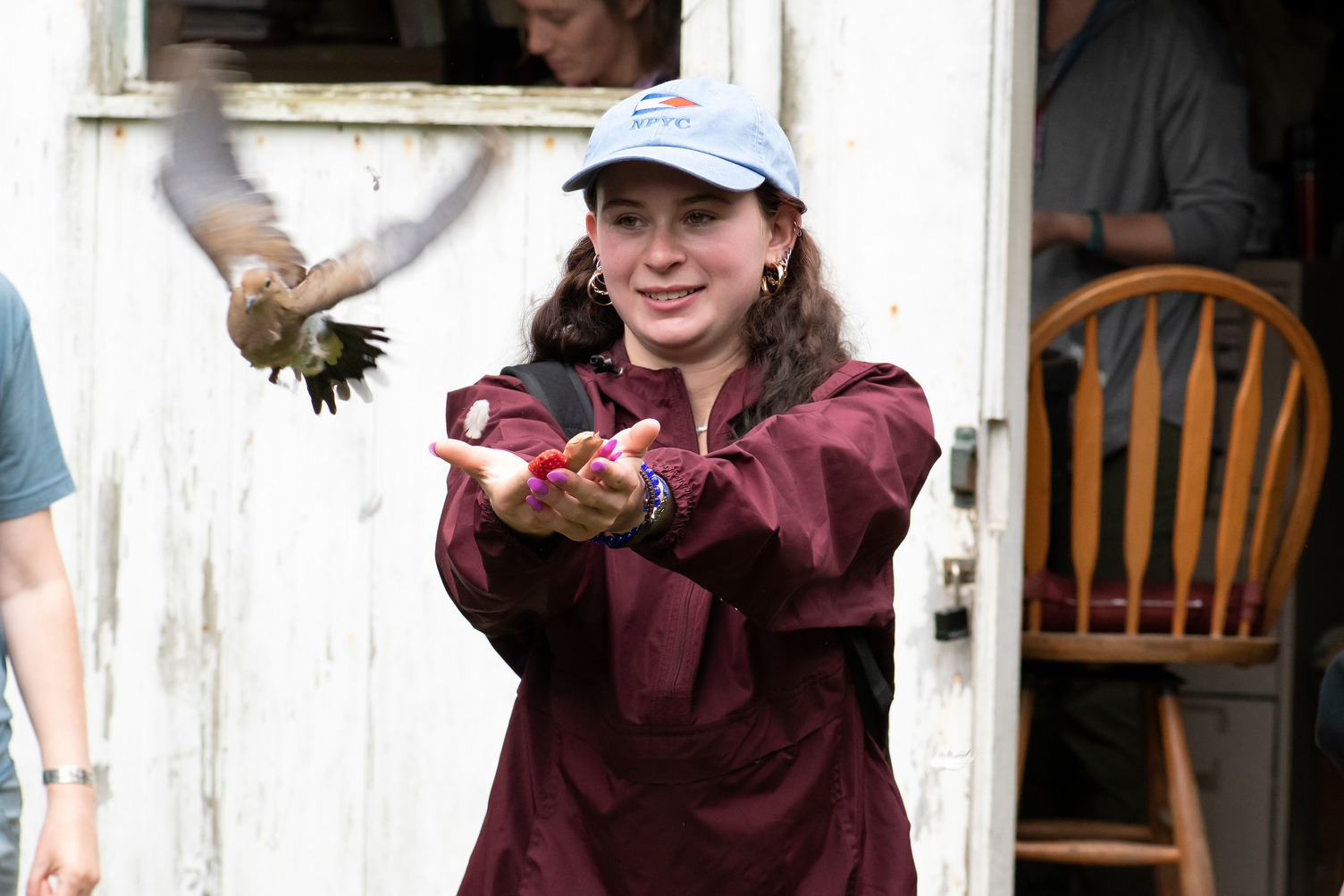The team at Foreman’s Branch Bird Observatory, a major bird banding station housed at the Center for Environment and Society (CES) at Washington College, has marked a major milestone in its 26-year history with the banding of its 350,000th bird. A Golden-crowned Kinglet was caught and banded with the historic designation mid-October.
This year alone, staff at Foreman’s Branch have caught, identified, banded, and released over 13,000 birds representing more than 125 species including herons, owls, ospreys, hawks, orioles, woodpeckers, hummingbirds, blackbirds, wrens, mockingbirds, bluebirds, and robins. A full account of birds banded by the station is updated daily during spring and fall migration seasons and logged publicly at https://www.trektellen.org/

“This tiny little kinglet marks a big occasion for everyone who has worked at the Observatory and banding station over the years,” said Foreman’s Branch Associate Director Maren Gimpel. “Everyone — our staff, students, and volunteers — played a part in getting us to this point. As one of the few bird observatories affiliated with a small liberal arts college, we are able to contribute critical data to the North American bird banding database while exposing our undergrads to avian monitoring methodologies and current research, providing them with a unique opportunity to explore their passions in ornithology.”
The Observatory’s primary research focuses on monitoring the seasonal movements of migratory birds between their breeding and wintering areas. By placing uniquely numbered aluminum bands on birds, the team can monitor population trends, document migratory pathways, and track the productivity of local breeding birds. Data from the spring and fall programs has been used to chart the timing of migration of many species of songbirds moving through the Eastern Shore of Maryland and is reported to the North American Bird Banding Program. Since its initiation in 1998, Foreman’s Branch has seen over 350 of its birds subsequently encountered after their initial banding with some being tracked as far north as Newfoundland and a far south as Ecuador.
Located on the Chester River, a few miles north of Chestertown, MD, the Bird Observatory is nestled in a waterfront refuge on Washington College’s River and Field Campus. The land serves as an important stopover habitat for shorebirds and is home to thousands of migrating and wintering ducks and geese each year. Washington College’s riverfront campus also encompasses several acres of experimental grasslands and valuable scrub-shrub habitats where summer breeding research is conducted on several species native to the area.
The Observatory’s banding station also serves as a hub for research conducted in-house and with external partners. Currently, the team is using a massive “tube” to test the bird-deterring properties of new types of glass to cut down on bird deaths caused by window collisions, which total in the millions each year. External partners have utilized the banding station’s set up, access to wildlife, and the Observatory’s staff to assist in notable projects including tracking tick dispersal in the area and studying the gut biome of Blackpoll Warblers.
“The work Maren and our team at Foreman’s Branch oversee is critical to continuing avian conservation efforts throughout the Chesapeake region and nationwide,” said Valerie Imbruce, Director of the Center for Environment and Society at Washington College. “The educational and research opportunities available to our students at the Observatory are invaluable and is one of the many things that make a Washington College education so distinctive. All of CES celebrates this great milestone.”
Washington College is planning to install a new banding station out on Foreman’s Branch this coming fall. The Observatory offers Washington College students interested in ornithology and conservation many opportunities to further their studies through paid internships and volunteer opportunities, as well as fellowships with Washington College’s Center for Environment & Society. More info on Foreman’s Branch Observatory is available here:




Write a Letter to the Editor on this Article
We encourage readers to offer their point of view on this article by submitting the following form. Editing is sometimes necessary and is done at the discretion of the editorial staff.